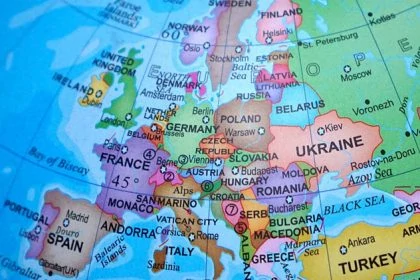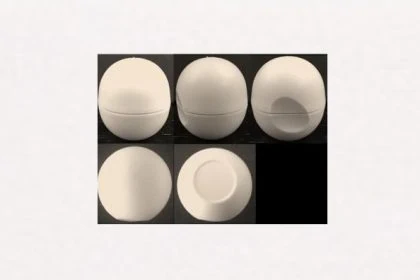The European Trademark Offices have agreed on a common decision-making practice in trademark law for the assessment of the distinctiveness of 3D marks / shape marks with additional elements. This has been in force since 1 April 2020 and leads to a further harmonisation of trademark law in the EU.

Despite the binding EU Directive (Directive 2008/95/EC), the previous decision-making practice for assessing the distinctiveness of 3D marks (shape marks) with elements is difficult. What size or proportion of the word or figurative elements is sufficient to confer distinctiveness on the sign? And how is the colour of a shape mark to be assessed?
The European Trademark Offices have now agreed on a common decision-making practice for assessing the distinctiveness of 3D marks / shape marks with elements, which came into force on 1 April 2020.
Excluded from common decision-making practice
This common decision-making practice explicitly does not apply to shape marks or 3D marks consisting exclusively of the shape of the product, nor to those whose shape produces a technical result. Nor does the decision-making practice apply to acquired distinctiveness through use of a mark.
Shape marks with a shape which is not in itself distinctive
On the positive side, the common decision-making practice applies to 3D marks/shaped marks which do not have a distinctive shape of the product but which also have word, colour and/or figurative elements. In the joint statement of the DPMA and the EPO this is described as the assessment of the inherent distinctiveness of shape marks as a whole, consisting of a non-distinctive shape of the goods themselves, their packaging or container and other elements to which shape marks are applied.
From practice: Louboutin shoes and bottle shapes
The most prominent example of this is the case of the famous Louboutin shoes with red soles. In 2018, the ECJ ruled that such a trademark does not consist “exclusively of the shape” within the meaning of the Trademark Directive, but rather that the shape is intended to protect the positioning of the color at a certain point of the product. The Dutch court followed this requirement in its judgement of February 2019.
And also in the area of bottle shape and protection as a 3D trademark there is a lack of stringent case law so far. Although a gold-plated bottle shape was granted trademark protection by the CFI in May 2019, the court rejected trademark protection for the distinctive bottle shape for Franconian wine in September 2019. The ECJ in turn granted trademark protection for a bottle shape with a bulge on the bottle neck.
Various rulings have also been issued for 3D brands with regard to packaging. Ferrero won 2019 before the ECJ in the trademark dispute about the 3D trademark on a similar packaging in the style of Tic Tac cans. Only recently, however, the CFI rejected trademark protection as a 3D Union trademark for the shape of a gold-coloured, wave-shaped butter dish – although the EUIPO has allowed similar trademarks.
Distinctive character by the elements
In the joint decision-making practice now adopted for the assessment of the distinctiveness of 3D marks / shape marks, correspondingly, decision-making aids are provided above all in relation to the word, colour and figurative elements.
Word and figurative elements
If a non-distinctive shape contains an element which is itself distinctive, that is sufficient to confer U on the sign as a whole. The size and proportion of the word and figurative elements may affect the distinctiveness. The rule of thumb is: if the size of the word and figurative elements has a sufficient effect on the overall impression. However, it should be noted that a word and figurative element may not be descriptive, so they are not distinctive if they contribute descriptive information about the product.
Distinctive character of very well-known marks and Brands
Of particular interest is the short passage on brands, which are very well-known brand names. According to the EU Directive, a shape trademark is excluded from trademark protection if the shape gives substantial value to the goods. One can certainly consider whether the special shape of Louboutin shoes, which is inseparably linked to the red sole, does not constitute the value of these shoes. But that aspect was not relevant in the Louboutin judgment.
However, in the decision-making practice of the trade mark offices, it is common ground in relation to well-known trade names that even small word and figurative elements are to be regarded as distinctive when trade marks are very well known.
Colours
As regards the effect of colour on distinctiveness, account must be taken of the public interest, according to which colours should remain available to other traders. Colour can confer distinctive character on a sign only if the specific combination of colours is unusual for the goods and dominates the overall impression. Likewise, distinctiveness can be achieved by contrasts, both in the colour scheme and between the goods and the element. However, a colour by itself does not normally create distinctiveness.
Moreover, according to the Louboutin judgment of the ECJ, it does not follow from the term “shape” that a colour per se can represent a shape without spatial limitation.
Overall impression is decisive
A shape mark often contains more than one of the elements mentioned here. It is also possible that several of these elements have an effect on the distinctive character of the sign. As a general rule, the combination of non-distinctive elements will not achieve distinctiveness.
However, the decisive factor is always the overall impression of the sign created by the combination of the elements.
Harmonisation of decision-making practice in the EU
This new Common Practice is part of the European Trade Mark Cooperation and came into force on 1 April 2020. However, since the majority of proceedings have been postponed due to the corona restrictions of the offices and courts – we report on this in our weekly Corona Update – this decision-making practice will only become really relevant with the relaxation and reopening of the offices and courts which has now been politically decided. With such a convergence programme, the trade mark offices of the European Union are, by the way, trying to achieve a real alignment of the decision-making practice in trade mark law.
The forthcoming judgements will show to what extent such an alignment can now be achieved when assessing the distinctiveness of 3-D marks / shape marks with word and/or figurative elements, if the shape as such is not distinctive.
Do you also want to protect or defend your trademark?
Our attorneys have many years of experience and expertise in trademark law as well as in the entire IP area and will be happy to advise you. Please contact us if you are interested – we look forward to your call!

Sources:
Common Practice 3D marks / shape marks in EU
Image:
TheDigitalWay | pixabay.com | CCO License







Leave a Reply